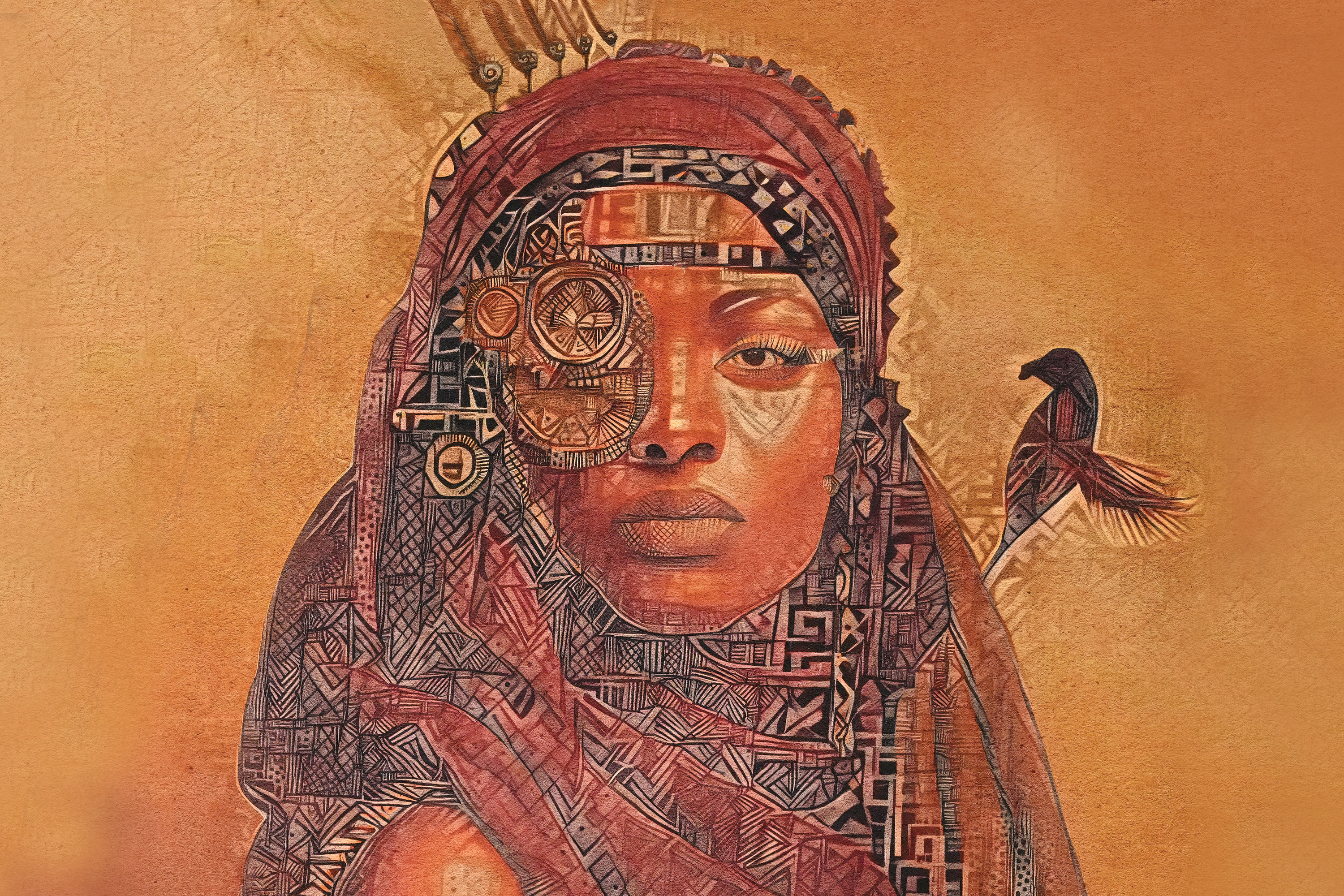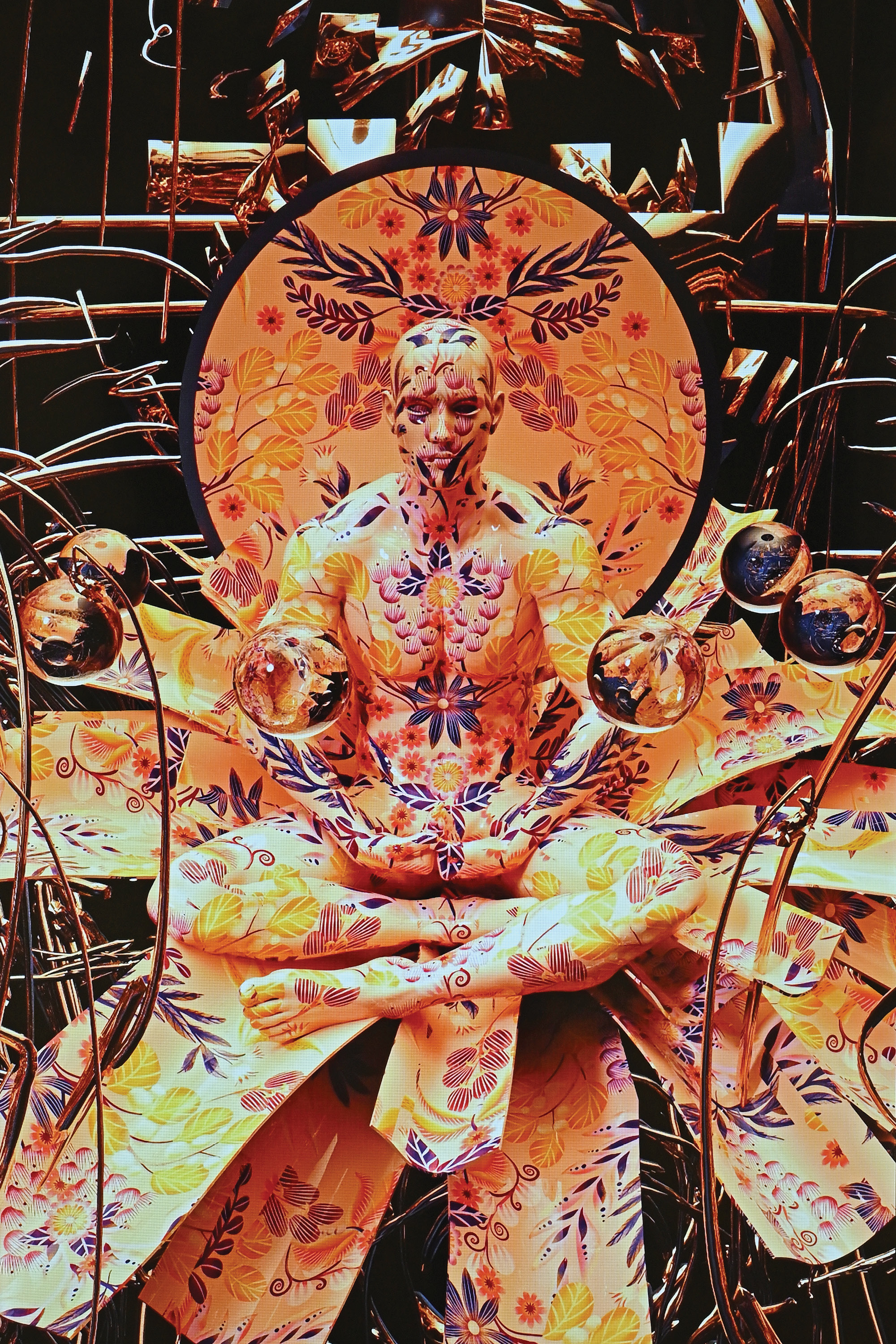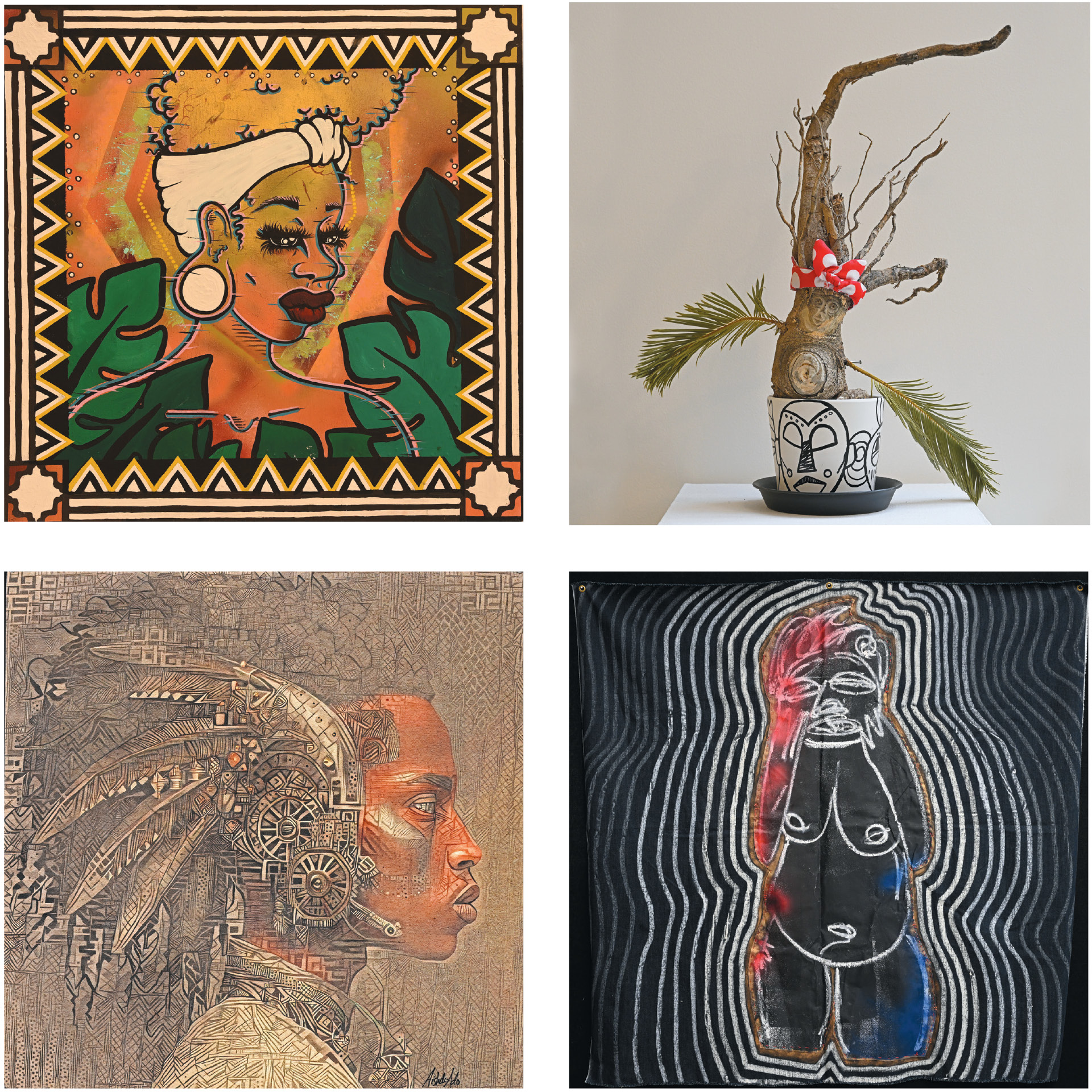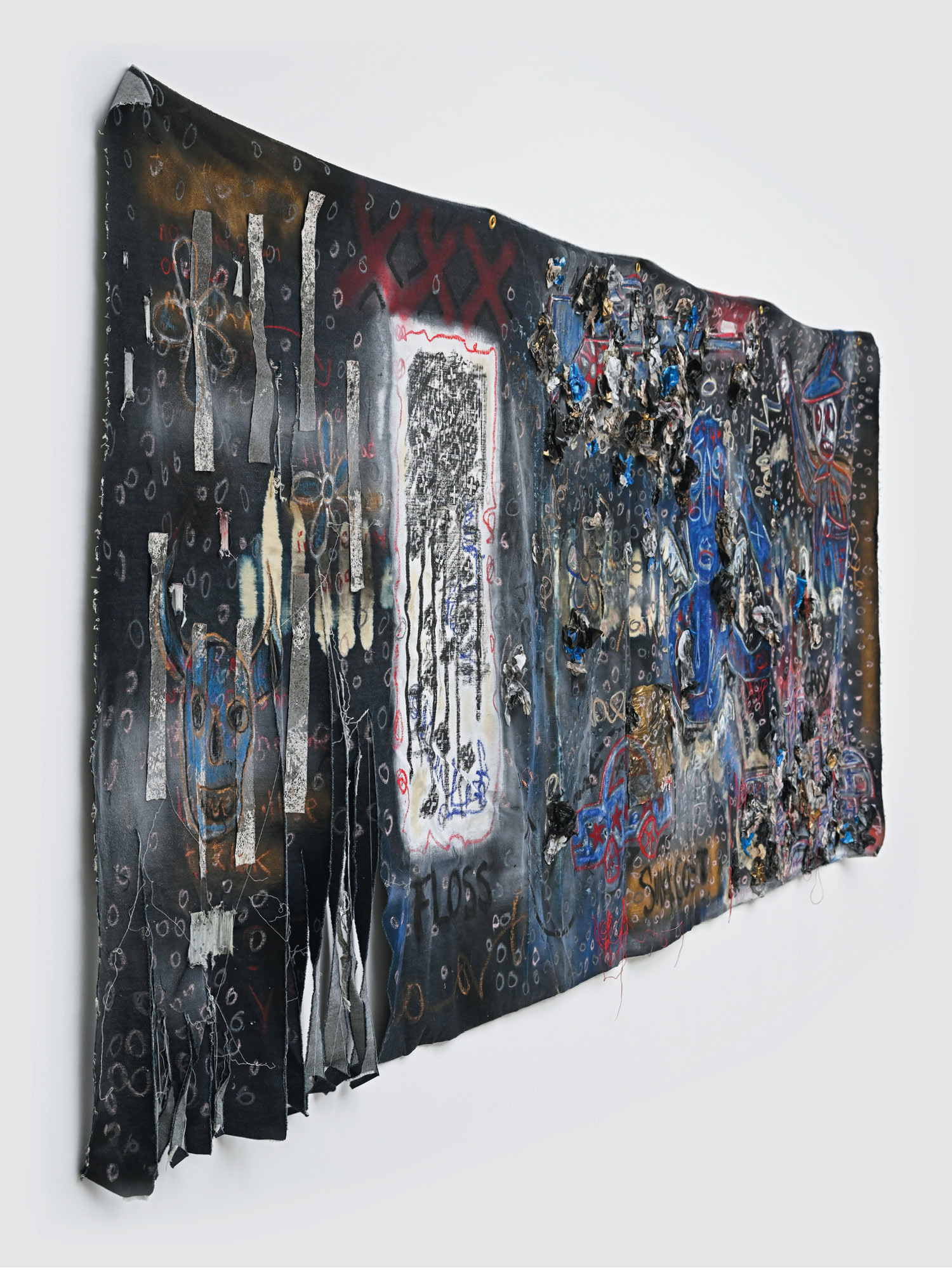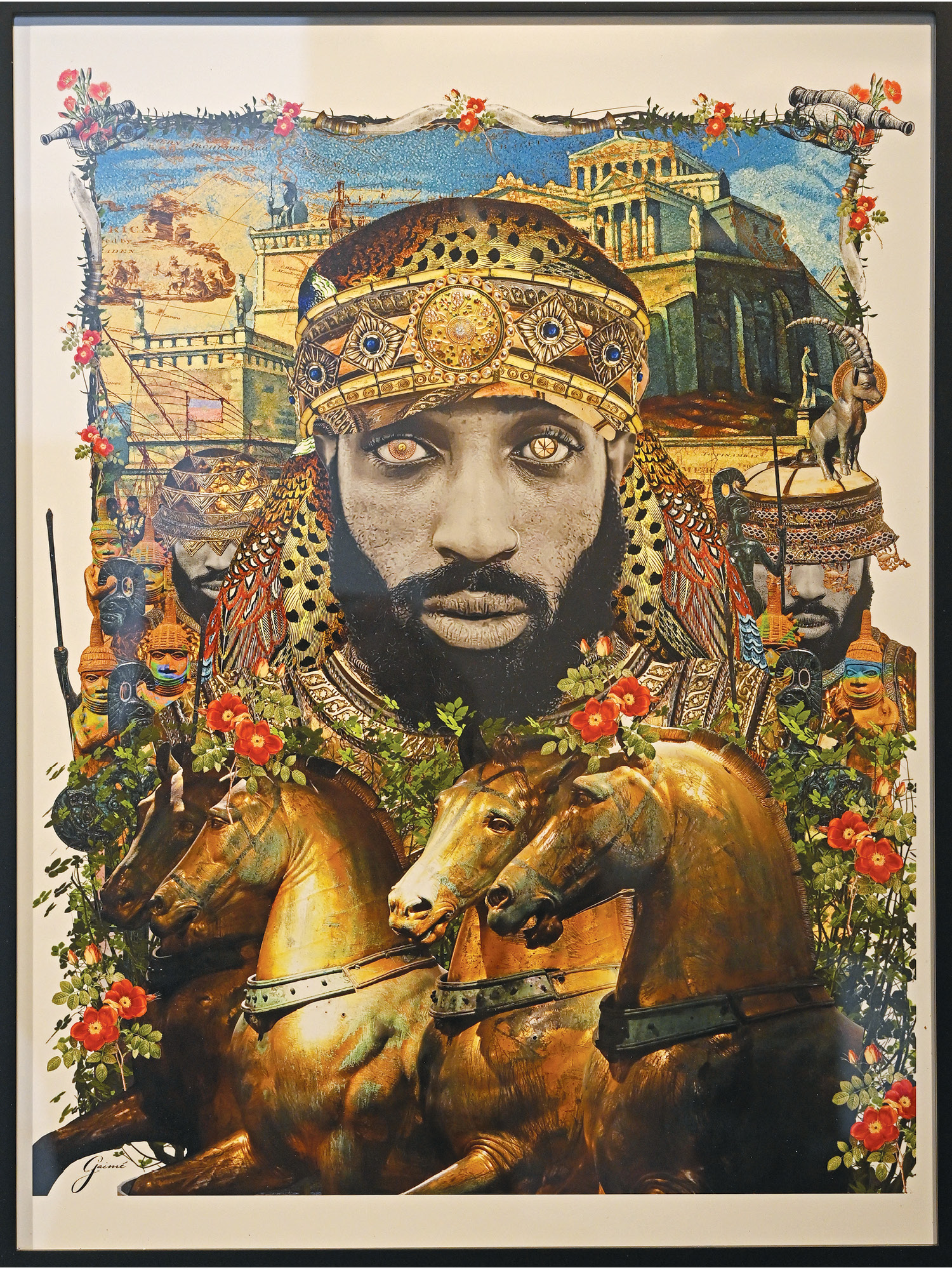6th Dimension
Artists use science fiction to center the Black experience and imagine a more equitable future.
What if Black realities were different?
This existential question is the driving force behind “6th Dimension,” a visually gripping, purposely trippy, Afrofuturistic multimedia exhibition that debuted this winter in Conn’s Cummings Arts Galleries.
Centering the Black experience and eliminating the confines of time, space and reality, the exhibition is curated by New London’s Juanita Sunday, an artist, curator and budding Afrofuturist who serves as an Ammerman Center for Arts and Technology community research and creation fellow.
“In physics, the 6th dimension is a 3D space of every possible ‘world’ or state of our universe that exists after the big bang,” Sunday explains. “This exhibition transports viewers through a multiversal experience of Black realities: In different planes of existence, what does the Black body look like and how does it function? Who are we in another world, in another time, in another dimension?”
Sunday, who is based in New Haven, says the initial inspiration for the exhibition, her fourth curatorial effort and second to debut at Conn, came from combining her love of all things science fiction with her professional interests in exploring Black identity and the Black experience through art.
“I’m a really big nerd. I love anything sci-fi, anything with time travel,” she says with a laugh.
But with “6th Dimension,” she also leans hard into Afrofuturism, an emerging genre that incorporates science fiction, history, technology and futuristic elements to reclaim Black ancestral, spiritual and cultural practices and imagine a more inclusive and prosperous future for Black people.
“Afrofuturism is about opening your mind to a different way of thinking and different possibilities,” Sunday says. “We're so used to thinking within the box lines, but Afrofuturism is questioning, ‘Why does our reality have to be this way? Are there other options? Are there other ways that we can live and work together, as people and as communities?’”
Sunday was first introduced to the concept two years ago during an Ammerman Center workshop led by Ingrid Lafleur, a curator, artist, activist and leading convener of the Afrofuturist cultural movement. But looking back, she says she now recognizes Afrofuturistic themes and approaches in all of her work, including her first exhibition, “NAPPY,” which explored black hair and culture and debuted at Conn in 2021.
“My work celebrates and honors our ancestry, our history, our past, but is also about reclaiming what has been lost to us through colonization,” she says.
To bring the multidisciplinary “6th Dimension” to fruition, Sunday selected a broad range of traditional and digital artists who use surrealism, technology and virtual and augmented reality. The result is a dynamic show that offers everything from 3D animation to acrylic painting and digital collage to plant sculpture.
Having concluded its seven-week run at Connecticut College in March, the exhibition will now show in other Connecticut locations, including in New Haven County at The Lab at ConnCorp. That exhibition will run Aug. 26-Oct. 21 and include an Into the Afroverse Summit at NXTHVN, a short film festival, a poetry slam and book club meetings.
“Through the exhibition and all the associated programming, I want people to think about these different ideas of a Blackness and Black experience that may be outside of the bounds of what they think about Black people or our history, present or future,” Sunday says.
“Afrofuturism centers the Black experience, but the principles and concepts are meant to be applied to everyone. And by centering folks who are the most marginalized, we can start revolutionizing our world and making it a better place for everyone."
